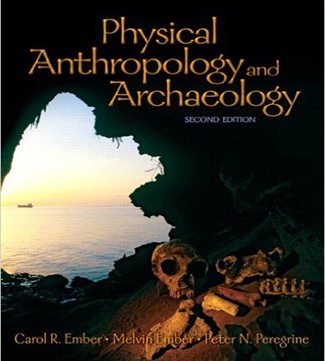Description
978-0132276986
CHAPTER 3: How We Study the Human Body
Multiple Choice
1. ___________ refers to the physical structures that form the human body.
a. Cells
b. Anatomy
c. DNA
d. Structure
2. The term anthropometry refers to ____________ of the human body.
a. measurement
b. movement
c. functions
d. structure
3. The term osteology refers to the study of _________.
a. bones
b. muscles
c. tissues
d. organs
4. _________ are/is the most likely part of the body to survive in both archaeological and fossil context.
a. Bones
b. DNA
c. Teeth
d. Hair
5. Things or quantities that vary are known as _________.
a. laws
b. theories
c. variety
d. variables
6. Explanations of laws and associations are ___________.
a. theories
b. variable
c. answers
d. rationales
7. The method of falsification shows that a _____________ seems to be wrong.
a. explanation
b. laws
c. theory
d. variable
8. A __________ is when all cases selected had an equal chance of being selected.
a. random sample
b. sample
c. blind sample
d. volunteer group
9. Gross anatomy focus on describing ______.
a. minor organs
b. muscles
c. major organs
d. bones
10. _________ developed a somatotyping, which he claimed allowed him to predict temperament.
a. Sheldon
b. Hooton
c. Hrdlicka
d. Whitings
11. There are a total of _____ bones in the human body.
a. 300
b. 150
c. 206
d. 275
12. Humans have ________ distinct kinds of teeth.
a. 5
b. 10
c. 3
d. 4
13. The core of the tooth is made of ________.
a. dentin
b. bones
c. ivory
d. tissues
14. The urinary system is composed of all except _________.
a. kidneys
b. ureters
c. urethra
d. endocrine
15. The _________ eliminates waste products from the blood.
a. cardiovascular system
b. urinary system
c. endocrine system
d. digestive system
16. A explanation is an answer to a _________ question.
a. why
b. what
c. how
d. when
17. _______________ is a description of the procedure.
a. Hypotheses
b. Theoretical construct
c. Operational definition
d. Kwashiorkov
18. ___________ focuses on how the organs and systems operate.
a. Endocrine
b. Gross anatomy
c. Integumentary
d. Functional anatomy
19. Something that cannot be observed or verified directly is a ___________.
a. variable
b. theoretical construct
c. theory
d. statistical association
20. The _______ can tell a lot about the diet of an individual
a. deciduous teeth
b. permanent teeth
c. carabellis
d. mandible maxilla
21. ____________ means that the observed relationship is unlikely to be due to chance.
a. Statistical association
b. Theoretical construct
c. Theory
d. Variable
22. To ___________ something is to say how it compares with other things.
a. hypothesize
b. explain
c. define
d. measure
23. A society is rated as having a long taboo if couples abstain from sex for more than ______ after the birth of a child.
a. 1 year
b. 6 months
c. 18 months
d. 2 years
24. The baby teeth are also known as ________.
a. shovel shaped
b. carabellis
c. deciduous
d. molecular
25. The American Journal of Anthropology was launched in __________.
a. 1890
b. 1918
c. 1932
d. 1907
True – False
26. Physical anthropologists study the physical and biological characteristics of living people.
True
False
27. The skeleton is the one major organ of the body that preserves well in the archaeological record.
True
False
28. Earnest Hooton used 40-50 physical criteria to categorize humans into three primary races.
True
False
29. Ergonomics is important in understanding growth and development.
True
False
30. Hrdlicka oversaw the creation of one of the world’s most extensive collections of skeletal remains.
True
False
31. Bones provide the most information about an individual’s health and lifestyle.
True
False
32. Men’s pelvises are broader and more flaring than women’s.
True
False
33. Tuberculosis progressively destroys bone tissue.
True
False
34. Bone will heal and form easily recognizable scar tissue.
True
False
35. In the 1960s a group of scholars began publishing comparative analysis of human teeth.
True
False
36. Teeth are important in helping to establish biological relationships between populations.
True
False
37. The concept of adaptation is easy to verify.
True
False
38. In 1990 about two-thirds of all American Samoans were severely overweight.
True
False
39. Functional anatomists have defined eleven organ systems in humans.
True
False



Reviews
There are no reviews yet.